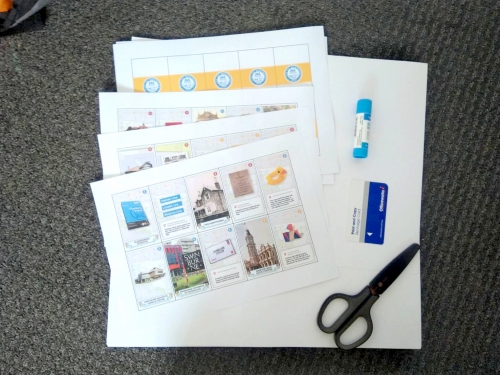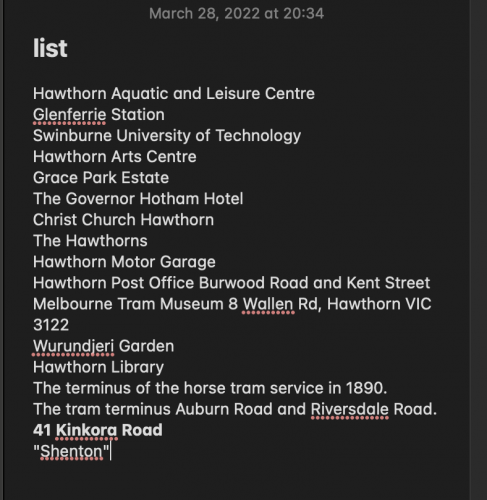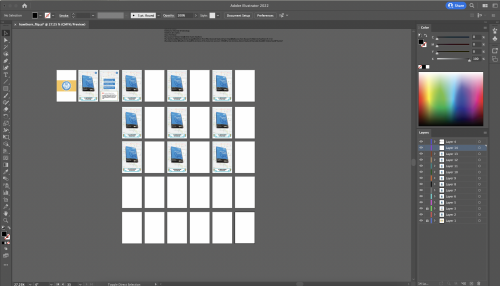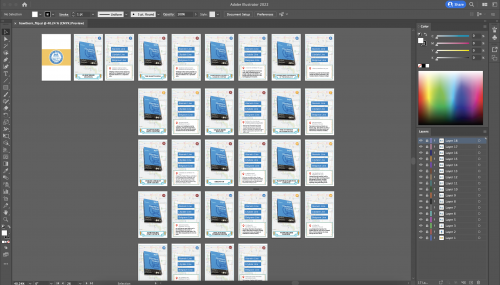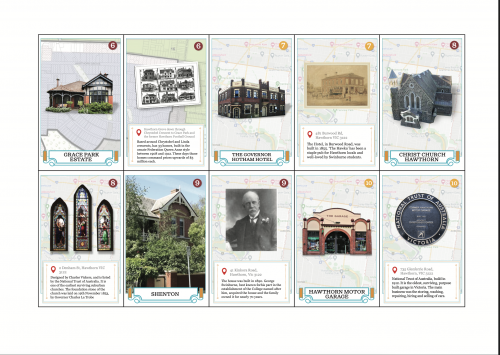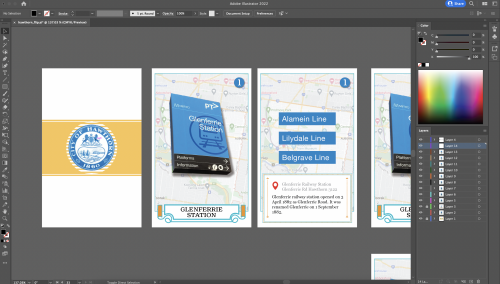
Theme: Play and Place
Context: While I was brainstorming for play and place, board games like Monopoly and Splendor popped out. In Monopoly, the player rolls dices, goes to different locations and interacts with the them, buying, selling, building on the properties or following instructions from random chance cards. I wanted to develop a similar card game but with actual neighborhood locations in Hawthorn.
Method:
- Pick locations in Hawthorn
- Note down locations and relevant attributes for each location
- Design card back cover and each front
- A set of 30 cards, two cards for each location, one for name of the location, one for the attribute of the location
- Print out the design
- Cut of the card design and mount the on cardboard
- Cut the mounted cards
- Play
This project is a memory card matching game. The rules are similar to regular memory matching game. There are two cards for each location in Hawthorn. There are 15 locations in this card set (30 cards in total).
The game is for 2-3 players. Lay out all the cards (5 rows and 6 columns) back cover facing up. Each player gets to flip two cards per turn. If the cards match (location and attribute), the player gets to take the pair and an extra turn. If the pair of cards don’t match, then the player puts back the cards, back cover up.
There are three different types of locations, blue, yellow and red. The blue location (pair) counts as 1 point. The yellow location (pair) worths 2 points. The red location (pair) worths 3 points. The players with the highest points win.
The aim for the game is to test how well the players know about the Hawthorn neighborhood , such the activities in certain locations or the history of them. Some of the attribute cards have clear indications for the matching locations. The players also require to memorize the placement of the previous flipped cards, in order to fetch more matching pairs.
Reflection:
I had a hard time coming up with approachable idea at the beginning regarding places. Then my housemate and I had a brainstorm session while we went to Glenferrie festival. I started with asking what came to their mind when thinking of play and place. Monopoly was the first idea. I continued exploring the elements and rules Monopoly has. The property, chance and community chest cards inspire me. I decided to use Hawthorne neighborhood as the theme, and work with cards, combined with memory matching game.
The aim of the game is to test how familiar the players know about Hawthorne and also learn more about the neighborhood through gameplay. Many similar game-based learning have been examined in researches. Players get motivated to explore the background knowledge and context by the games. Researches show that learning with games can bring out more effective learning results. Educational games can also raise the learner’s interest and offer different ways of interaction or communication of the intended topic / theme (Pivec 2007).
I had a test run of the Hawthorn card game with my housemate. My housemates live in Hawthorn for about a year and a half, so they understand the neighborhood quite well. I had moved to Hawthorne for just a bout 2 months. However, I won the game in test run by one point, a very close win, probably because I did the research on the locations while building the game. During the gameplay, the discussions about the locations and history background came naturally when any of us got matching pairs. We also discussed about experiences of relevant activities on or around the locations. The game obviously works as a tool for establishing dialogue of goal topic.
I can see other opportunities with this game. It can be used as a neighborhood tour medium instead of a standard visitor guide, which can be applied to any places. The feedback from Duncan also inspires me with further ideas. The game can be more complex and fun (longer to play) if each attribute card comes with an activity (quest) that is associate with the location. The player will have to go to the location and complete the quest in order to obtain the matching pair. By doing so, the players will visit the places in the neighborhood and interact with surroundings in person, which is more exciting than an indoor card game.
Reference: Pivec, M. (2007). Editorial: Play and learn: Potentials of game-based learning. British Journal of Educational Technology, 38(3), 387–393. https://doi.org/10.1111/j.1467-8535.2007.00722.x
Project outcome: https://youtu.be/Hg0TjpnePe8
About This Work
By Gin Lin
Email Gin Lin
Published On: 30/03/2022
